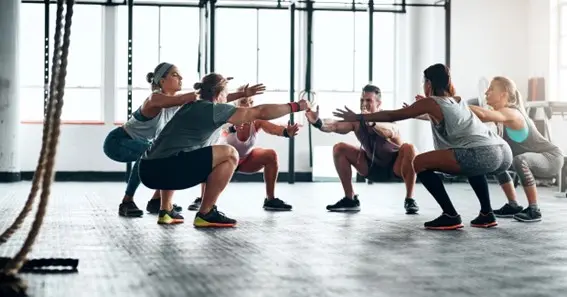Staying active in your senior years greatly benefits both your physical and mental wellbeing. Group fitness enables older adults to safely improve their strength, balance, and cardiovascular health. Exercising together also nurtures social connectedness through building community and companionship. Research shows group settings increase workout enjoyment, leading to higher adherence and fitness levels over time.
This article explores the many perks of older adults embracing communal fitness options to maintain health and independence.
To get more information about aged care services please visit Oxa Care.
The Dynamics of Group Fitness for Seniors
Group exercise is very helpful for older adults looking to stay physically active. Research indicates that seniors engaging in group fitness programs are about 80% more likely to consistently adhere to workout routines.
As compared to those who exercise alone at home. Group settings help participants show up for each class. Members motivate one another to progress and enhance their physical capabilities over time. There is also a fun, energizing atmosphere when working out together that individuals may lack independently. This social motivation additionally promotes exercise adherence.
However, group fitness provides more than just physical benefits for active seniors. These communal programs also greatly boost emotional health and well-being. Researchers have found that older adults going to group exercise report around a 25% rise in general emotional well-being from social interactions.
If you’re interested in finding out more about aged home care services make sure you check out Let’s Get Care.
For older populations susceptible to isolation, group classes foster community connections among fellow seniors. Participants support and care for one another during exercise sessions. This leads to reduced stress and improvements in overall optimism and life contentment. According to the documented wellness benefits, both physical and mental, pursuing group routines emerges as ideal for aging individuals hoping to stay independent longer.
As seniors explore the benefits of group fitness, it’s not just about staying active. While relishing the camaraderie and motivation of group exercise is fantastic, it’s essential not to neglect your overall health. Before diving into a group fitness routine, consider reaching out to Medicare Physicians. They can provide personalized care tailored to your specific health needs. It’s all about striking a balance between the social enjoyment of group workouts and the individualized support of healthcare from Medicare doctors.
Also Read N: Navigating the Business Landscape Why Credit Unions Are Essential
Physical Benefits
Group exercise offers many physical health gains that help seniors remain active and independent longer. The communal environment also motivates members to participate more regularly, amplifying fitness improvements over time.
Enhanced Cardiovascular Health
One major upside of consistent group workouts for older individuals is significantly reduced risk of heart disease. Research published in the National Library of Medicine indicates that seniors engaging in various moderate group fitness programs reduce their cardiovascular disease risk by 30%.
The social encouragement to sustain exercise adherence makes meeting weekly physical activity targets easier. This stimulates heart health via circulation improvements that solo regimens often fail to achieve. Group settings promote both fitness habit formation and peer bonding to drive cardiovascular gains
Improved Strength and Flexibility
Group workout programs tailored to seniors focus extensively on balance, coordination, and flexibility training. These exercises amp up the body’s stability and shock absorption capacities. Things like yoga, tai chi, and even dance offer light resistance while stretching muscles and joints.
Research shows committing to such low-impact group fitness regimens greatly reduces senior risk of falling and injury over time. According to the Journal of Aging and Physical Activity, participants in various balance-promoting group classes reduced their fall risk by nearly 30% compared to those who exercised alone.
A reduced likelihood of falls translates to fewer fractures and traumas. These predicaments often rapidly reduce independence late in life. However, communal programs, providing progressive balance and agility boosts, counteract this through strength and stability increases. They hone essential skills to prevent slips and damage.
Additionally, group mobility work lengthens flexibility as older adults continue reaching, bending, and twisting weekly. Joints grow accustomed to safely reaching full ranges of motion once more. This leads to ease in tasks requiring dexterity like dressing, house chores, and personal care as citizens age.
Balance and Coordination Enhancement
Maintaining good balance requires having both bodily strength and overall stability. As seniors age, their vision, proprioception, and reflexes slowly decline. This diminishes natural equilibrium and coordination over decades. But remaining active via group fitness programs markedly counteracts this decline.
Research published in the Journal of Aging and Physical Activity indicates seniors who participate consistently in various moderate communal exercise classes reduce their risk of falling by 30%. This is compared to non-active elderly individuals, who are more vulnerable to spills and accidents.
This advantage in fall prevention largely stems from the balance components commonly incorporated into senior fitness routines. Activities that develop burst power, quick Footwork drills, dynamic standing yoga flows, and more build critical coordination that is not possible solo. Certified trainers guide precise yet safe drills, promoting balance and rejuvenation results.
Boosted balance from challenging group class components also translates to better stability when walking outdoors or moving through daily life. Little things like recovering after bumping into objects, stepping over cracks in pavements, and moving through crowds all become less risky ventures. Sturdier equilibrium from fitness hobby investments leads to fewer sudden hospital visits – and more independence years ahead.
Also Read P: Hidden Hazards in Your OT: Cyber Threats for Established Industries
Mental Health Benefits
Group exercise delivers significant mental upsides for aging populations beyond just physical improvements. The communal nature of classes boosts emotional, cognitive, and motivational wellness. This all promotes daily living competence, which is so critical in older years.
Social Interaction and Emotional Wellbeing
One major mental advantage of consistent senior group fitness participation is heightened emotional health. Research in the International Journal of Aging and Human Development discovered seniors attending various group classes saw their emotional wellbeing rise by about 25%.
This mood boost results from abundant social connections lacking in solitary living. Friends made through group bonding lead to less perceived isolation and loneliness. Sharing positive experiences together counteracts the risk of anxiety and depression prevalent later in life. Peer motivation helps each member feel supported through workout challenges as well. The social elements fuse to uplift spirits and outlooks.
Cognitive Stimulation
In addition to emotional perks, group workouts help senior minds stay sharp. Published PNAS journal findings reveal senior citizens engaging in moderate communal fitness regimens slow age-related cognitive decline by up to 20%.
Following movement patterns in choreographed routines helps the brain continuously problem-solve. Quick coordination adjustments hone fast thinking faculties while forging nerve connections. Music enjoyment and conversational moments also train recall. These elements together strengthen mental fitness to aid aging cognition.
Motivation and Accountability
Research in the Journal of Aging and Physical Activity indicates elderly individuals participating in guided group programs adhere to exercising 40% more over time than solo fitness endeavors. The boosted motivation ensures improved results.
Knowing peers attend each week and offer encouragement makes it easier for members to continuously challenge themselves. Trainers foster safe spaces while leading sufficiently difficult sessions to achieve gains. Seniors push harder and skip fewer classes thanks to communal accountability, lifting performance benchmarks constructively. This makes group settings ideal for realizing measurable wellness objectives.
Final Thoughts
In summary, group fitness classes tailored for seniors provide many benefits beyond just physical activity. The social connections seniors make in these classes have been shown to reduce feelings of isolation and loneliness. Participating in group classes on a regular basis leads to improvements in both physical and mental health for senior citizens.
The teamwork and camaraderie experienced in group workout sessions give seniors motivation to exercise more. Based on the research, group fitness should be promoted as an impactful option to improve overall wellbeing for the senior population.
Frequently Asked Questions
- Can seniors with different fitness levels or health stuff still do group workouts?
You bet! The classes are set up to work for folks at any level. Teachers show easier versions of moves, so everyone gets something out of it.
- How much group exercise should seniors be doing to feel good?
The American Heart Association recommends at least 2.5 hours of moderate aerobic exercise per week. Seniors can hit that target by coming to classes regularly.
- What kinds of group fitness do seniors tend to like best?
Seniors enjoy mixing it up with water aerobics, yoga, dance groups, walking clubs, and more. Picking activities that match your personal interests and body is what matters most.






